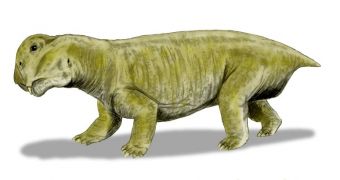An international collaboration of researchers was recently able to model the effects that the Permian-Triassic extinction event had on the Earth's atmosphere. The P-T event is also known as the Great Dying, since it was the single most destructive global extinction event in history.
The extinction reached a peak around 252 million years ago, but it probably started a long time before. Some recent studies suggest that the event originated in the formation of the supercontinent Pangea, some 50 million years before.
In the new research, a team that included scientists from the Carnegie Institution for Science (CIS) Department of Terrestrial Magnetism (DTM) created a computer simulation that modeled the effects of massive volcanic eruptions on the atmosphere. Many researchers agree that separate volcanic events played a huge role in the P-T extinction.
The first of these events is believed to have occurred in southern China, around 260 million years ago, while the other one happened in Russia some 251 million years ago. Together, these massive eruptions released vast amounts of ash, carbon dioxide and other gases in the atmosphere, enough to block out the Sun, and stop photosynthesis across the planet.
DTM Director Linda Elkins-Tanton and the team developed a model explaining how massive amounts of carbon dioxide (CO2) and sulfur dioxide (SO2) released by the eruption contributed to the formation of highly acidic rains. These precipitations removed the majority of nutrients from the soil.
This type of pressure was too much for countless plant species to endure. With diminished photosynthetic abilities from the darkened skies, little to no nutrients from the ground and acid rains pelting them constantly, they died in troves, taking numerous species of herbivores with them.
The P-T extinction event destroyed some 70 percent of all land vertebrates, and 96 percent of all marine life. It is the only known extinction of insects, with more than 83 percent of all genera and 57 percent of all families disappearing.
The new model revealed that, in addition to the acid rains, the atmosphere might have also suffered a catastrophic ozone depletion, which enabled ultraviolet radiations from the Sun to reach the surface of the planet undiluted. This may have produced skin cancer and radiation burns in many surface species.
Despite its severity and global scale, this extinction remains the most mysterious of all. Researchers have yet to agree on a single cause for the event, probably because no clear cause exists.

 14 DAY TRIAL //
14 DAY TRIAL //